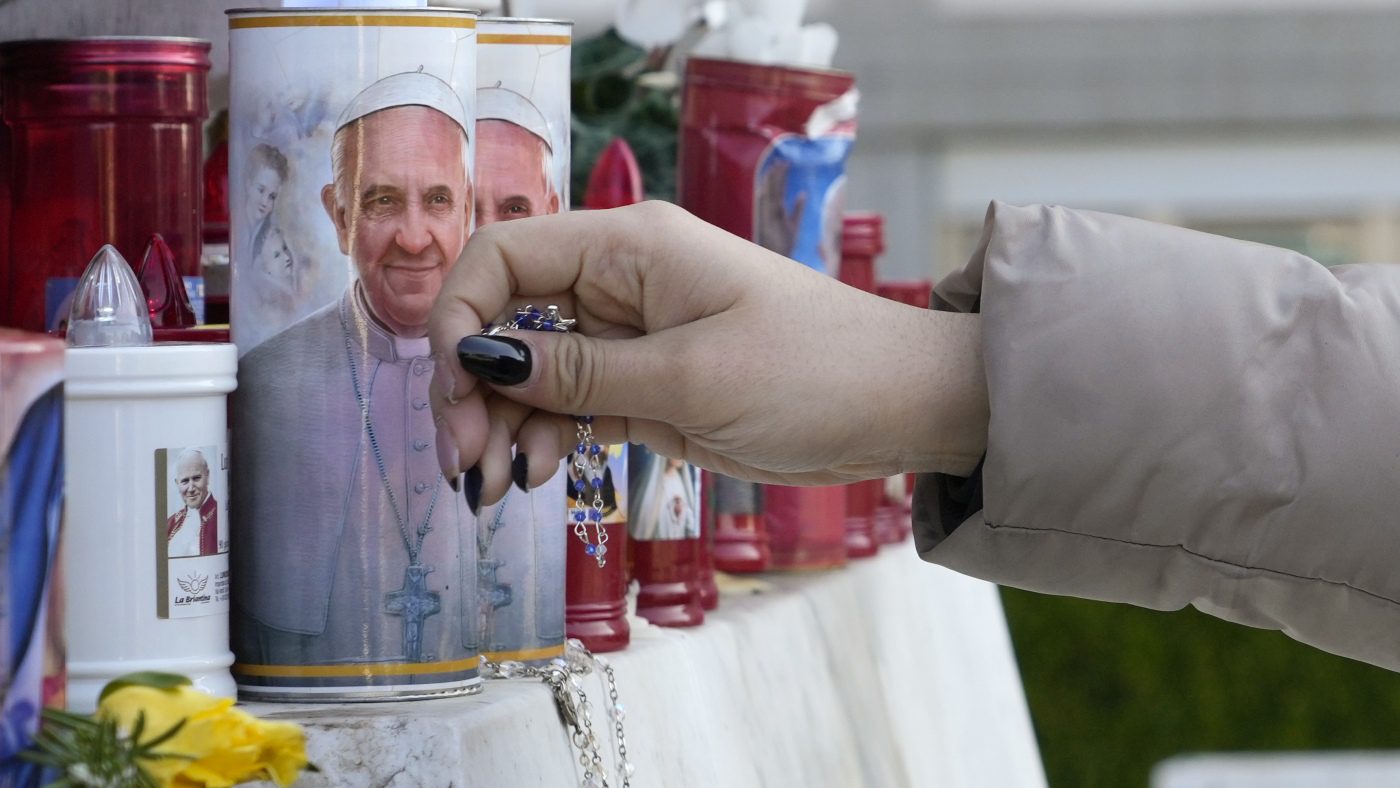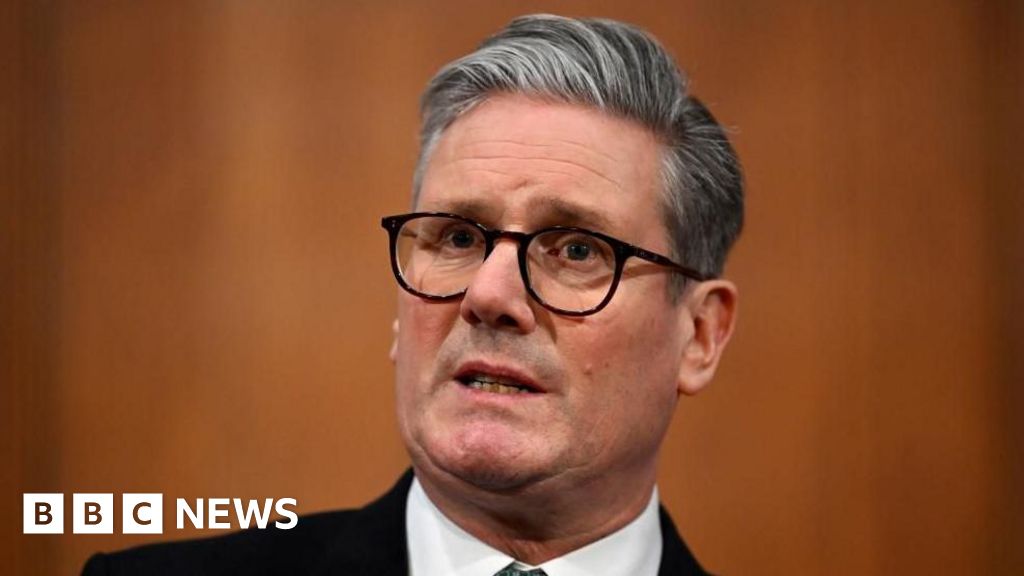

A woman places a rosary beside candles featuring images of Pope Francis outside the Agostino Gemelli Polyclinic, where he is currently receiving treatment for pneumonia in Rome.
Gregorio Borgia/AP
hide caption
toggle caption
Gregorio Borgia/AP
ROME — Pope Francis is reported to be in critical condition as of Saturday after experiencing a prolonged respiratory crisis due to asthma, which necessitated high levels of oxygen, according to a statement from the Vatican.
The 88-year-old pontiff, who has been hospitalized for a week due to a complex lung infection, also required blood transfusions following tests that indicated a condition related to anemia.
“The Holy Father remains alert and spent the day in an armchair, though he is experiencing more pain than yesterday. Currently, the prognosis remains uncertain,” the Vatican stated.
Earlier reports indicated that Francis was fighting pneumonia along with a serious respiratory infection, with medical professionals stating that his condition remains precarious, necessitating further hospitalization for at least another week.
Despite his absence, the Vatican continued its Holy Year celebrations over the weekend. In an earlier statement on Saturday, it was noted that Francis had a restful night.
However, medical experts have expressed concerns about the potential for sepsis, a serious blood infection that may develop as a pneumonia complication. As of Friday, there were no signs of sepsis, and the pope was responding positively to his treatment regimen, his medical team reported in their comprehensive update.
“He is not out of danger,” emphasized his personal physician, Dr. Luigi Carbone. “Like all fragile patients, they are always in a delicate state, meaning even minor changes can shift their condition significantly.”
Francis, who suffers from chronic lung disease, was admitted to Gemelli Hospital on February 14 after a week-long episode of bronchitis escalated. Medical professionals initially diagnosed a complex viral, bacterial, and fungal infection followed by pneumonia in both lungs. Treatments include “absolute rest,” a mix of cortisone and antibiotics, in addition to supplemental oxygen as needed.
Dr. Sergio Alfieri, head of medicine and surgery at Rome’s Gemelli Hospital, highlighted the significant risk of the germs from Francis’s respiratory system entering the bloodstream, potentially resulting in sepsis, which could lead to organ failure or even death.
“If sepsis develops given his respiratory issues and advanced age, recovery would be extremely challenging,” he stated during a news conference at Gemelli on Friday. “Everyone, touch whatever you want in hopes he will be fine,” he said, tapping on the microphone. “That is the key risk here: the germs migrating into the bloodstream.”
“He understands the gravity of his situation,” Alfieri shared. “He asked us to convey that message.”
While the deacons were gathering at the Vatican for their special Jubilee weekend celebration, Francis fell ill at the onset of this significant Holy Year—occurring once every 25 years in Catholicism. This weekend, he was scheduled to honor the deacons, a step preceding priestly ordination.
In his absence, officials overseeing the Holy Year will conduct Sunday’s Mass, as Francis is expected to miss his customary Sunday blessing for the second consecutive week, which he could have delivered from the hospital if his health permitted.
“Even though he’s not (physically) here, he’s definitely with us in spirit,” expressed Luis Arnaldo Lopez Quirindongo, a deacon from Ponce, Puerto Rico, who attended the Jubilee celebrations. “He’s in our hearts as we pray for him, and we feel his presence accompanying us.”
Doctors have emphasized that Francis’s recovery will take time, and he will have to continue managing his chronic respiratory issues upon returning to the Vatican.
“He needs to recover from this infection, and we all hope for his full recovery,” Dr. Alfieri concluded. “However, the reality is that all scenarios remain possible.”










